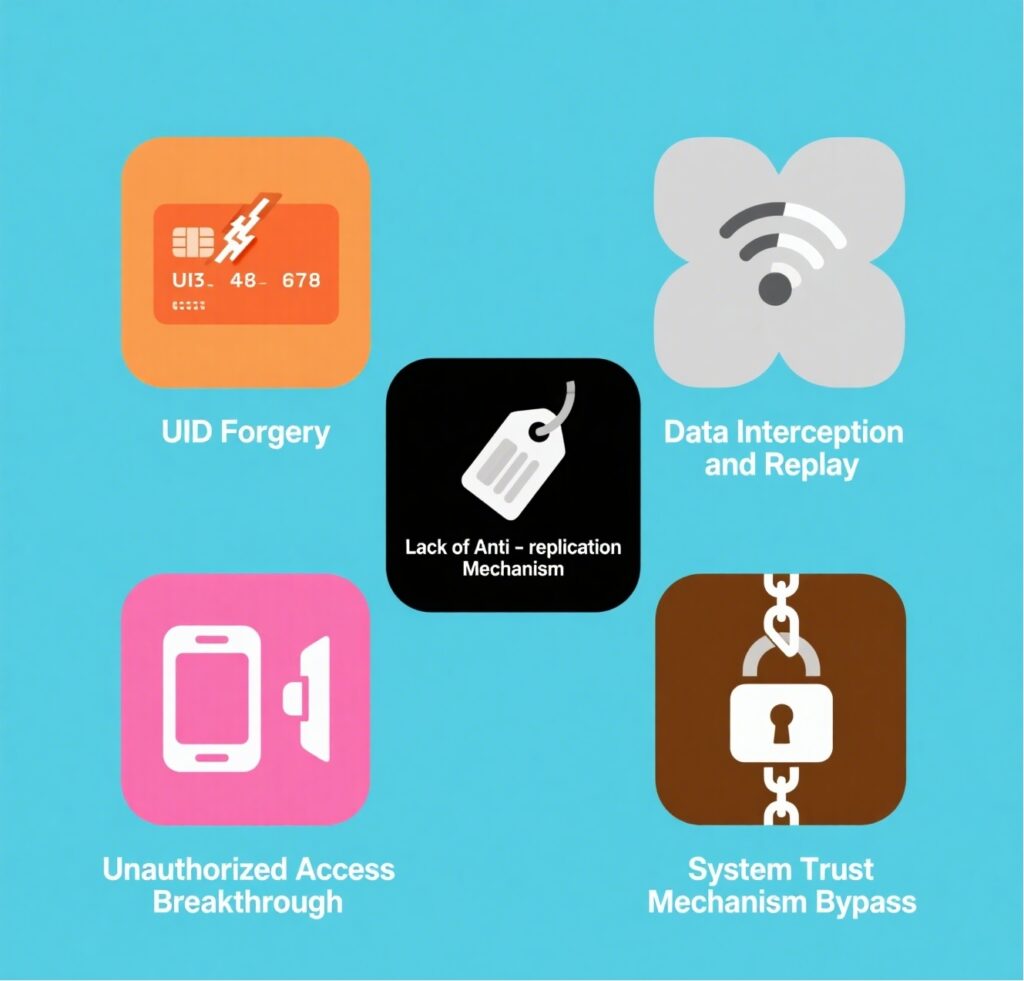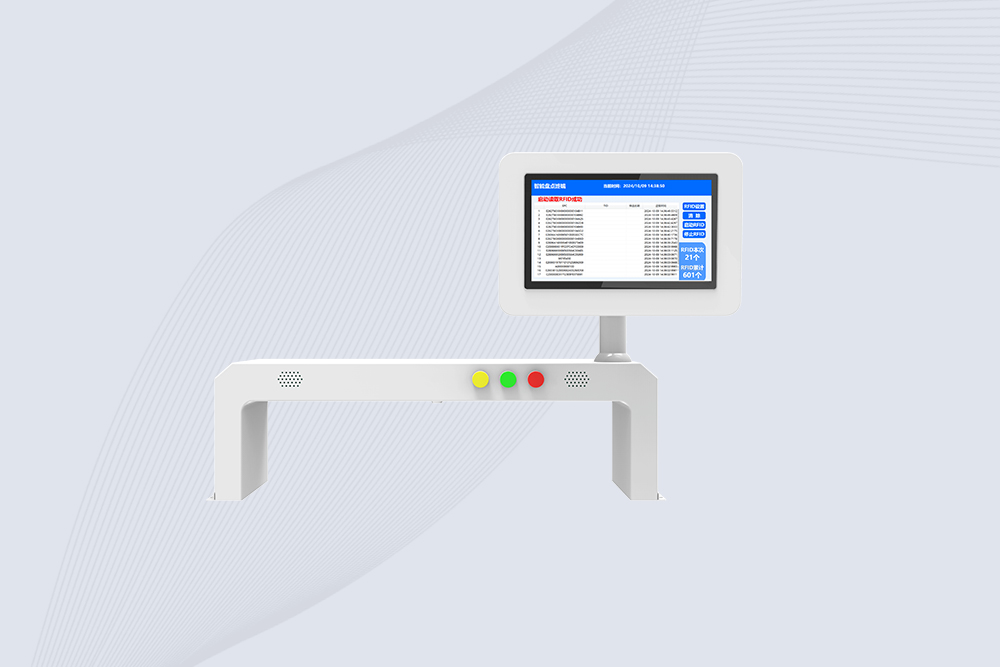How do I integrate fixed RFID readers with SAP ERP systems?
680Learn how to connect fixed RFID readers to SAP ERP for real-time inventory updates. Explore middleware, API integration, and data mapping best practices.
MoreAll RFID Product
In fields such as RFID access control, ticketing, and industrial testing, using Android RFID Emulator—based on Host-based Card Emulation (HCE)—has become key method for rapid deployment and debugging. However, this same technology has also been exploited by malicious actors to spoof UIDs, bypass access permissions, and even clone employee access cards. For system integrators and enterprise IT teams, understanding the security implications of Android RFID emulation and implementing effective protective measures has become critically important.

Since Android 4.4, the system has supported Host-based Card Emulation (HCE), allowing smartphones to emulate RFID tag behavior. The emulation process works as follows:
The RFID reader sends an APDU (Application Protocol Data Unit) command to the phone.
The HCE-enabled app on the phone responds with emulated data.
Developers can define the emulated UID, AID, and card information.
The system remains compatible with readers based on the ISO 14443-4 standard.
As result, smartphones can simulate physical RFID cards and interact with systems without requiring hardware-level authorization under certain conditions.
Despite their convenience, Android RFID emulators introduce several security risks that enterprises must consider:
| Risk Type | Description |
| UID Spoofing | Attackers can forge specific UIDs to bypass authentication systems. |
| Data Interception & Replay | Hackers can intercept communication and replay responses from authorized cards. |
| Unauthorized Access | Emulators can simulate access cards to enter restricted areas. |
| Bypassing System Trust | Systems lacking secondary authentication are easily fooled by emulators. |
| Lack of Anti-Cloning Mechanisms | Tags without dynamic encryption or authentication protocols are easy to duplicate. |

▶ Case 1: Emulating an Employee Access Card
An attacker used an Android phone with an NFC emulation app to clone a coworker’s access card UID. By doing so, they entered the company building at night without triggering access control alerts or logs.
▶ Case 2: Exploiting a Ticketing System Vulnerability
In an NFC ticketing system without encryption or authentication, an attacker captured the communication between a legitimate ticket and the reader. They then emulated the ticket using a smartphone to gain unauthorized re-entry at a live event.
▶ Case 3: Industrial Control System Manipulation
A factory used low-security RFID cards to operate critical machinery. An attacker used an Android RFID Emulator to replicate control commands, which led to unauthorized activation and disruption of automated systems.
| Protection Strategy | Description |
| Use dynamic encrypted cards (e.g., MIFARE DESFire) | Prevent UID spoofing with dynamic challenge-response encryption. |
| Enable anti-emulation detection in readers | Restrict specific device types or detect abnormal antenna characteristics. |
| Implement two-factor authentication (2FA) | Combine card swiping with PIN codes, biometric checks, or facial recognition. |
| Deploy device whitelisting mechanisms | Only allow authorized cards or hardware to interact with the system. |
| Monitor unusual card activity and trigger alerts | Flag suspicious behavior like frequent UID changes or access attempts after hours. |
Using Android RFID Emulator can significantly speed up testing and development, especially during prototyping or access control system upgrades. However, once system moves into production, enterprises must take stricter control by:
Clearly separating emulated devices from authorized production hardware.
Restricting emulator usage by time, role, or network.
Building isolated testing environments to avoid cross-contamination with live systems.
Android RFID Emulator is powerful tool for modern RFID development and system validation, but it also opens potential attack vectors if misused. Enterprises and system integrators must understand its working principles and associated risks. By adopting multi-layer encryption, robust authentication, and access control strategies, they can maintain development agility while building a truly secure RFID infrastructure.

Cykeo CK-T8A rfid gate access control system features IP68 enclosure, 400 tags/sec scanning, and 6-antenna array for warehouse/manufacturing security.

Cykeo CK-T8F RFID gate entry systems deliver 200+ tags/sec scanning, EPC C1G2 compliance, and EAS alarms for warehouse/production gates. Supports Windows/Android OS.

Cykeo CK-T8C RFID gate opener delivers 200+ tags/sec scanning, ISO 18000-6C compliance, and facial recognition for logistics/secure facilities. Supports Windows/Android OS.

Cykeo CK-T8D RFID gate access control system features 4-antenna 99.98% accuracy, ISO 18000-6C compliance, and real-time theft prevention for libraries/warehouses. Supports Windows/Android OS.
Learn how to connect fixed RFID readers to SAP ERP for real-time inventory updates. Explore middleware, API integration, and data mapping best practices.
MoreDiscover why RFID barcode labels fail in warehouses and factories, common label types, and how to choose the right one for your project.
MoreLearn how handheld RFID readers integrate with smartphones and tablets via Bluetooth, USB, or apps. Discover use cases for retail, logistics, and field service.
MoreLearn whether handheld RFID scanners require special training, what skills are essential, and how Cykeo simplifies onboarding for teams.
More